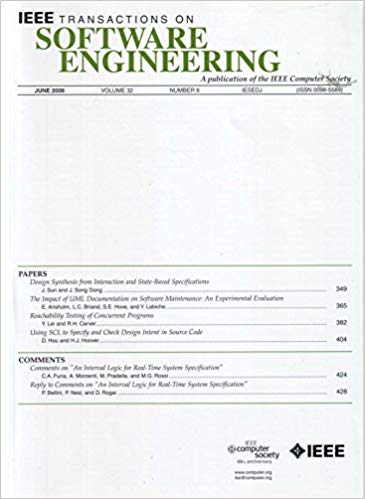Domain-Driven Design for Microservices: An Evidence-Based Investigation
IF 6.5
1区 计算机科学
Q1 COMPUTER SCIENCE, SOFTWARE ENGINEERING
引用次数: 0
Abstract
MicroService Architecture (MSA), a predominant architectural style in recent years, still faces the arduous task of identifying the boundaries of microservices. Domain-Driven Design (DDD) is regarded as one of the major design methods for addressing this task in practice, which aims to iteratively build domain models using a series of patterns, principles, and practices. The adoption of DDD for MSA (微服务的领域驱动设计:基于证据的调查
微服务架构(MicroService Architecture,MSA)是近年来流行的一种架构风格,但它仍然面临着确定微服务边界的艰巨任务。领域驱动设计(DDD)被认为是在实践中解决这一任务的主要设计方法之一,其目的是利用一系列模式、原则和实践迭代地构建领域模型。然而,在 MSA 中采用 DDD(简称 DDD4M)可能会在充分了解方法要求和应用领域方面遇到相当大的挑战。当务之急是系统地了解采用 DDD4M 的各个方面,并提供有效的指导。本研究报告是一项实证调查,综合了系统的文献综述和确认性调查。通过回顾 34 项科学研究和咨询 63 名从业人员,本研究从 5W1H 角度揭示了 DDD4M 应用的现状、挑战和可能的解决方案:时间(When)、地点(Where)、原因(Why)、人员(Who)、内容(What)和方法(How)。对证据的分析和综合显示,对领域建模工件的理解存在很大差异。现状表明,在应用过程、领域模型设计和实施以及领域知识获取和管理方面,需要进一步的方法论支持。为了推动实践的发展,我们将研究结果整理成了一份初步清单,旨在通过阐明 DDD4M 的应用过程和沿途的具体关键注意事项来帮助实践者。
本文章由计算机程序翻译,如有差异,请以英文原文为准。
求助全文
约1分钟内获得全文
求助全文
来源期刊

IEEE Transactions on Software Engineering
工程技术-工程:电子与电气
CiteScore
9.70
自引率
10.80%
发文量
724
审稿时长
6 months
期刊介绍:
IEEE Transactions on Software Engineering seeks contributions comprising well-defined theoretical results and empirical studies with potential impacts on software construction, analysis, or management. The scope of this Transactions extends from fundamental mechanisms to the development of principles and their application in specific environments. Specific topic areas include:
a) Development and maintenance methods and models: Techniques and principles for specifying, designing, and implementing software systems, encompassing notations and process models.
b) Assessment methods: Software tests, validation, reliability models, test and diagnosis procedures, software redundancy, design for error control, and measurements and evaluation of process and product aspects.
c) Software project management: Productivity factors, cost models, schedule and organizational issues, and standards.
d) Tools and environments: Specific tools, integrated tool environments, associated architectures, databases, and parallel and distributed processing issues.
e) System issues: Hardware-software trade-offs.
f) State-of-the-art surveys: Syntheses and comprehensive reviews of the historical development within specific areas of interest.
 求助内容:
求助内容: 应助结果提醒方式:
应助结果提醒方式:


